view online at https://www.tasart.co.nz/email/mailout.php?content_id=10
Hi , welcome to issue #10 of the Tasart newsletter. Hope you're staying warm in your studios or outdoors, wherever your preferred space to draw and paint. We have been utilizing our studio space, holding demos and if anyone has any suggestions on what they'd like to experiment with and which products they would like to learn more about, please let us know as we can organize just about anything. Since our past newsletters contained product information about paint and brushes, we've decided this time we will get back to basics and talk about the pencil and basic tools associated with drawing and sketching, where inevitably, all good painting originates.
Drawing & Sketching
As an artistic endeavour, drawing is almost as old as mankind; people made rock and cave drawings since prehistoric times. By the 12th-13th centuries AD, monks were preparing illuminated manuscripts on vellum or parchment in monasteries and throughout Europe were using lead styli to draw lines for their writings and for the outlines for their illuminations. Soon artists were using silver to make drawings and underdrawings. When paper became generally available from the 14th century onwards, artists' drawings, both preparatory studies and finished works, became increasingly common. Today with a plethora of drawing instruments available, the possibilities are endless.
The Pencil is Born
With the discovery of a large graphite deposit in Borrowdale, Endland in 1564, graphite came into widespread use. Graphite left a darker mark than lead, but was so soft and brittle that it required a holder. At first, sticks of graphite were wrapped in string. Later, the graphite was inserted into wooden sticks that had been hollowed-out by hand.

The first mass-produced pencils were made in Nuremberg, Germany in 1662. There, an active pencil industry developed with famous companies like Faber-Castell, Lyra, Staedtler and others grew throughout the 19th century industrial revolution. Towards the end of the 19th century, early U.S. manufacturers aided by immigrants from the German industry, began producing pencils in a number of factories located in New York and New Jersey. Notable U.S. manufacturers at that time were the Joseph Dixon Crucible Company (now Dixon Ticonderoga), Eagle Pencil Company (later Berol and now Prismacolor) and General Pencil Company.
Mechanical Pencils and the Introduction of Polymer Lead
The first mechanical pencil was invented in Britain in 1822 but it wasn't until the early 1900's that mechanical pencils were commercially successful. In 1962, Pentel Japan invented the first Polymer lead which enabled the production of smaller leads (less the 0.9mm) and increased the popularity of mechanical pencils, worldwide.
Graphite leads, used in wood and mechanical pencils, are made of a mixture of graphite and ceramic clay. Polymer mechanical leads are made up of synthetic resin, graphite and carbon, offering remarkable strength and flexibility. Both types are available in different hardness grades but the mechanical range is usually not as large as the standard pencil range.
While working in our sketchbooks our pencil of choice is a mechanical pencil and just a good ol' HB 0.5mm polymer lead. With layering, we are able to get a dark value with one grade lead.
Below, is the inside cover of one of Jim's sketchbooks and a Graphic Novel in progress. He's used his trusty Pentel Mechancial Pencil, the same pencil he's been using for over 20 years! Some of the finest marks are made possible by sharpening the lead point with a sandpaper block.

Graphite comes in all different shapes and sizes. In addition to the original wood casing, solid graphite sticks and woodless pencils are readily available. The Prismacolor Turquoise Pencil is available from the hardest (lightest) grade, 9H to the softest, 9B.

Like an artist's brush or a favorite writing pen, the right feel of a mechanical pencil is a personal choice and that's why, like our paint brushes, we carry so many.

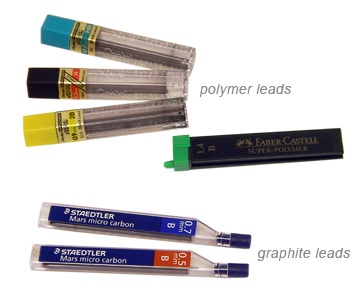
Erasing
Below are a few of the erasers we recommend for graphite and polymer. The Magic Rub is superior in that it's tough enough to remove the lead but soft enough that it doesn't damage the surface of the paper. The Kneaded Eraser is great for 'dabbing' an area to lighten the lead without destroying the form. The Tuff Stuff Eraser is great for tight areas and the Milan Battery Eraser for spot or flowing highlights.

Cool Tools
The eraser shield enables accuracy when removing or highlighting areas in tight work and a sand paper block can sharpen your lead point to the finest point!


Paper Stumps are made from Paper Pulp and are used in rendering, where an almost airbrush effect can be achieved. Tortillons are made of rolled paper and are coarser than a paperstump, so care should be taken not to damage the surface of the paper.

Pencils extenders enable the pencil to be used right down to its stump.

Sharpeners
When purchasing a sharpener, research the blade, making sure its made of quality steel. Try to avoid blades made in China. The Mobius & Ruppert range are made with German Steel and their blades are also replaceable. The brass sharpeners are nicely weighted and feel great in the hand. A forever sharpener.

The Mobius & Ruppert Triple Sharpener will sharpen your pencil, 3 x ways!
A standard sharpener where both the wood and the lead are removed

When you only require a sharp lead point, as no wood is removed

When you want to remove the wood casing only and extend the length of the lead

Making Your Own Graphite Transfer Sheet
Tired of those small, filmsy graphite transfer sheets? It's easy to make your own and one that you can use over and over again.
Take any size 90gsm Tracing Paper (Vellum in other parts of the world)...
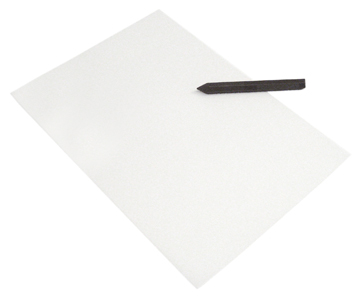
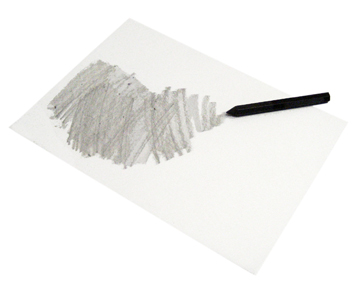
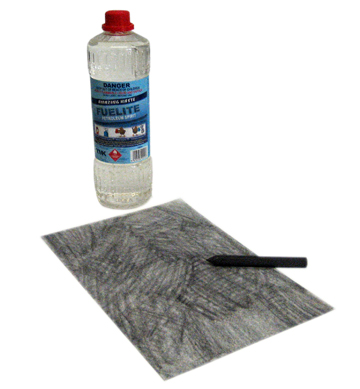
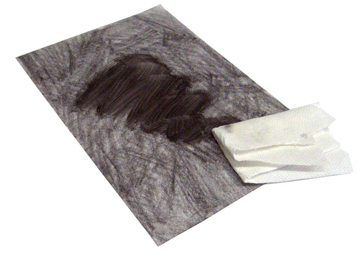
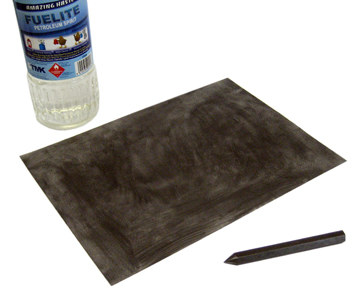
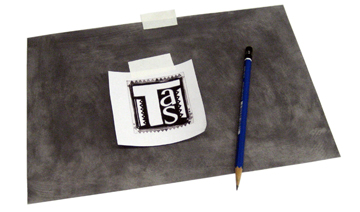
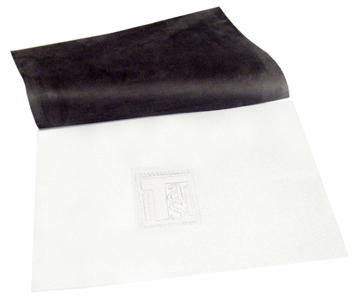
Mixed Media
With heavier weight sketchbooks and drawing paper available, all sorts of mixed media can be combined with graphite and polymer. Down below I've added a background of 18kt gold using a Krylon Gold Leaf Pen. A Quickie Glue (roller ball) glue stick can be used as an adhesive for loose gold leaf, where script and fine detail can be gilded. For loose dark mark making, I used a black Prismacolor pencil, which are wax-based and very soft. Since Prismacolor Pencils are wax-based, you can also 'dissolve' and blend them easily using either Winsor & Newton Sansador or a Copic Marker Blender. Prismacolor also makes a solvent blender in pencil form.

Happy sketching everyone. It would be wonderful to see some of your drawings and we encourage artists to share what they're working on on our Facebook page.
* * *
Until next time,
Sandy & Jim
Takapuna Art Supplies
www.tasart.co.nz
Subscription
SUBSCRIBE:
You can subscribe to The Artist's Newsletter at www.tasart.co.nz/email/
UNSUBSCRIBE:
You can unsubscribe by changing your account preferences at www.tasart.co.nz/account/profile or by following this link:
http://www.tasart.co.nz/email/optout.php?rid=&vid=759&eid=
Comments
We'd love to hear from you! If you have any suggestions on how we can improve this newsletter please send comments to info@tasart.co.nz
* * *
This newsletter was written by Sandy Collins on 2011-07-05
…
© Takapuna Art Supplies. All Rights Reserved. www.tasart.co.nz